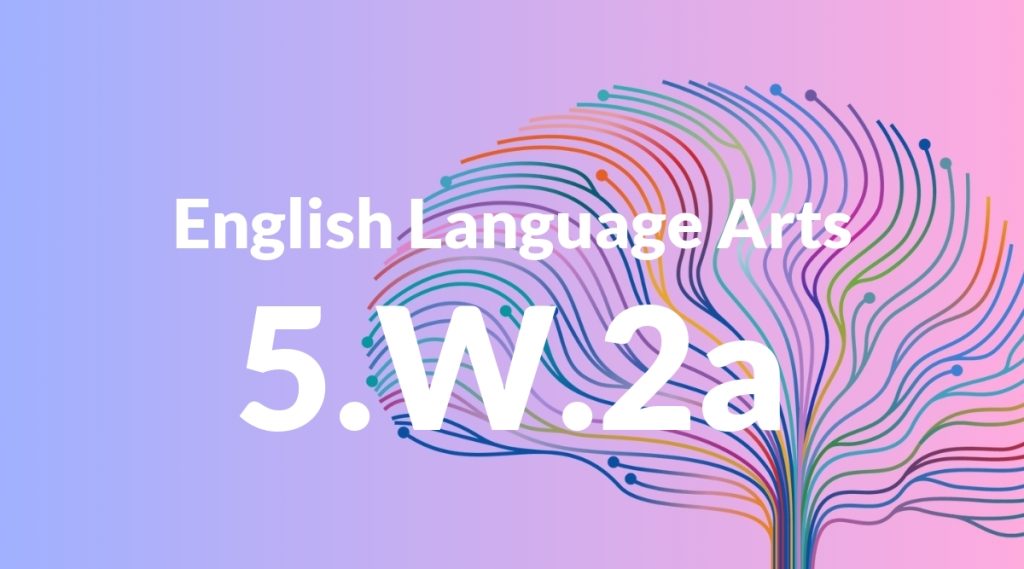Standard: 5.W.2a – Introduce a topic clearly, provide a general observation and focus, and group related information logically; include formatting (e.g., headings), illustrations, and multimedia when useful to aiding comprehension.
Grade level: Grade 5
Subject: English Language Arts
Domain: Writing
Teacher Overview
This standard focuses on teaching students how to clearly introduce a topic, provide a general observation and focus, and logically group related information. The inclusion of formatting, illustrations, and multimedia is emphasized to aid comprehension. Mastery of this standard is crucial for developing students’ ability to organize and present information effectively, which is a key skill in both academic and real-world contexts. Students should understand paragraph structure, topic sentences, supporting details, and basic formatting tools in word processing software.
After mastering this standard, students will be able to write more complex and detailed essays, reports, and presentations. They will also be able to effectively use various media to enhance their writing and communicate their ideas more clearly.
Common Misconception 1
A common misconception is that illustrations and multimedia are merely decorative. This is incorrect because these elements can significantly enhance the reader’s understanding by providing visual context and clarification of the written content.
Intervention 1
An effective intervention is to demonstrate how illustrations and multimedia can be used to explain complex ideas. For example, use a diagram to show the steps in a scientific process or a video to illustrate a historical event.
Common Misconception 2
Another misconception is that all related information should be grouped into one large paragraph. This is incorrect because it can make the text difficult to follow. Using headings and subheadings helps to organize information into manageable sections, making it easier for the reader to understand.
Intervention 2
Teach students to use headings and subheadings by providing examples and practice opportunities. Show them how breaking information into sections can improve the clarity and organization of their writing.
Prerequisite Knowledge
Students should have a basic understanding of paragraph structure, topic sentences, and supporting details. They should also be familiar with basic formatting tools in word processing software.
Subsequent Knowledge
After mastering this standard, students will be able to write more complex and detailed essays, reports, and presentations. They will also be able to effectively use various media to enhance their writing and communicate their ideas more clearly.
Instructional Activities
- Create a research report with headings and subheadings
- Develop a multimedia presentation on a chosen topic
- Write an illustrated guide on a science concept
- Craft a blog post with embedded images and videos
- Design a brochure with formatted sections and illustrations




